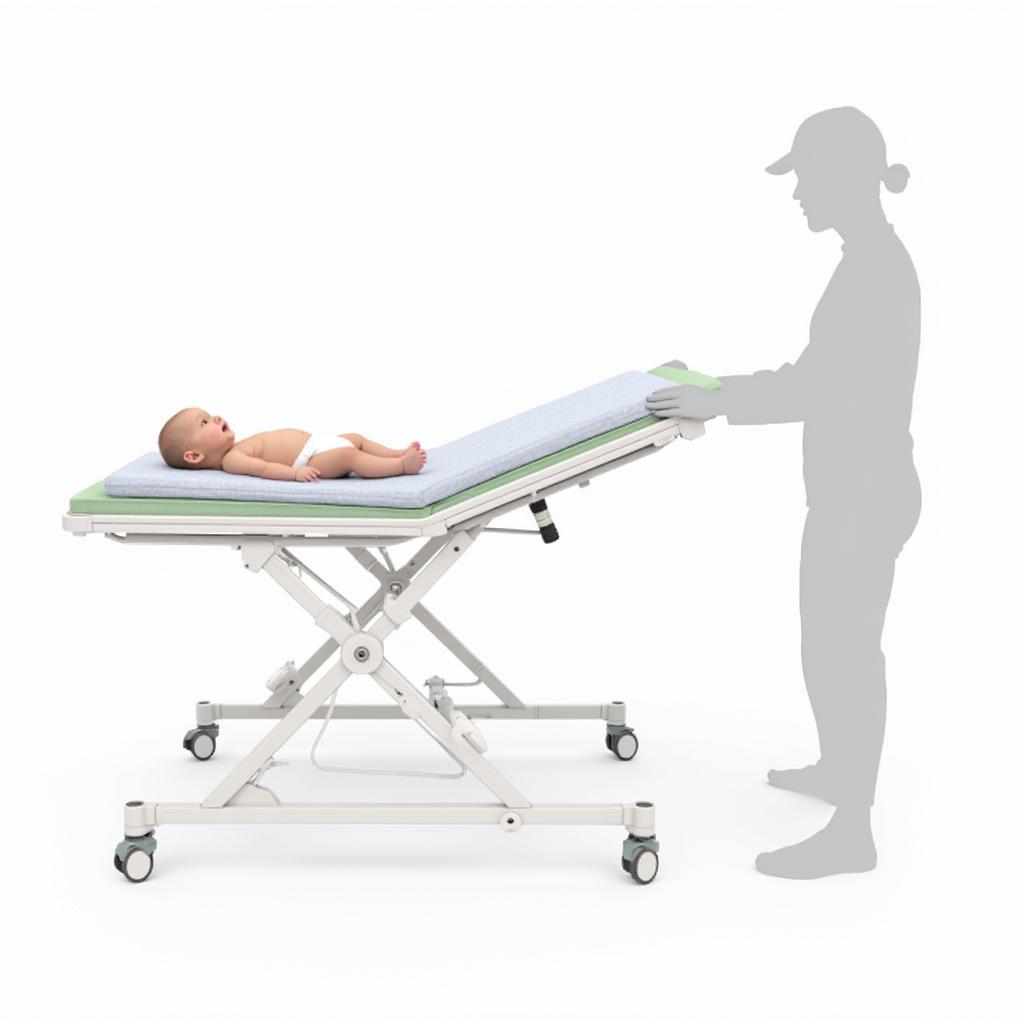Choosing the right Hospital Infant Bed is crucial for ensuring the safety and comfort of newborns during their stay. This article will provide valuable insights into various aspects of hospital infant beds, helping you understand the key features to look for and make informed decisions regarding newborn care. We’ll cover topics from safety standards to specialized features and even touch upon the importance of a comfortable sleeping environment for infants in a hospital setting.
The importance of a suitable hospital infant bed cannot be overstated. It plays a vital role in ensuring the newborn’s well-being during a crucial period. These specialized beds provide a safe and controlled environment, facilitating medical care and monitoring while promoting healthy sleep. From adjustable height for caregiver access to integrated warming systems for temperature regulation, hospital infant beds are designed to meet the unique needs of newborns.
You can read more about different types of hospital beds, including their sizes, at hospital bed size.
Key Features of a Hospital Infant Bed
Several key features distinguish hospital infant beds from standard cribs. These features enhance safety, facilitate medical care, and promote the infant’s comfort. Understanding these features will guide you in selecting the most appropriate bed for the specific needs of the newborn.
Safety and Security
- Side Rails: Secure side rails are essential to prevent falls and ensure the infant remains safely within the bed.
- Locking Mechanisms: Sturdy locking mechanisms on the wheels and adjustable components prevent accidental movement and maintain stability.
- Materials: Non-toxic and easily cleanable materials minimize the risk of infection and allergies.
Adjustability and Accessibility
- Height Adjustment: Adjustable height allows caregivers easy access to the infant for examinations and procedures.
- Tilt Functionality: The ability to tilt the bed can aid in respiratory support and improve comfort for infants with specific medical needs.
- Mobility: Wheels with locking mechanisms facilitate easy transport of the infant within the hospital.
 Hospital Infant Bed Safety Features
Hospital Infant Bed Safety Features
Specialized Features
- Integrated Warming Systems: Temperature regulation is crucial for newborns. Integrated warming systems help maintain a stable and optimal thermal environment.
- Built-in Scales: Some hospital infant beds feature built-in scales, allowing for convenient and accurate weight monitoring without disturbing the infant.
- IV Poles and Monitoring Equipment Compatibility: Compatibility with IV poles and monitoring equipment is essential for administering medications and tracking vital signs.
You might be interested in learning more about infant cribs as well, available at hospital infant crib.
What to Consider When Choosing a Hospital Infant Bed
Selecting the right hospital infant bed requires careful consideration of several factors, including the infant’s specific medical needs, the hospital’s environment, and available resources.
The Infant’s Needs
- Medical Condition: The infant’s medical condition will dictate the necessary features, such as respiratory support or temperature regulation.
- Size and Weight: The bed should be appropriately sized to accommodate the infant’s growth and ensure comfort.
- Developmental Stage: Consider the infant’s developmental stage and choose a bed that promotes safe and healthy development.
The Hospital Environment
- Space Constraints: The available space within the hospital room will influence the size and mobility of the chosen bed.
- Existing Equipment: Compatibility with existing hospital equipment, such as monitoring systems, is crucial.
- Infection Control Protocols: The bed should be easily cleanable and compatible with the hospital’s infection control protocols.
 Hospital Infant Bed Size and Adjustability
Hospital Infant Bed Size and Adjustability
Budget and Resources
- Cost: Consider the cost of the bed and its associated maintenance.
- Availability: Ensure the desired bed is readily available and can be obtained within the required timeframe.
- Training: Adequate training for staff on the proper use and maintenance of the bed is essential.
More information on hospital bed mattress sizes can be found at what is the size of a hospital bed mattress.
Conclusion
Choosing the appropriate hospital infant bed is a critical decision that impacts the newborn’s safety, comfort, and overall well-being. By considering the key features, the infant’s individual needs, and the hospital environment, healthcare providers can make informed choices that support optimal care and promote positive outcomes. Remember, the right hospital infant bed contributes significantly to a safe and nurturing environment for the newborn during their hospital stay.
FAQs
- What are the standard dimensions of a hospital infant bed?
- What materials are typically used in the construction of hospital infant beds?
- Are hospital infant beds equipped with safety alarms?
- How often should a hospital infant bed be cleaned and disinfected?
- What are the weight limits for hospital infant beds?
- What are the different types of mattresses available for hospital infant beds?
- How can I ensure the hospital infant bed is compatible with our existing monitoring equipment?
For information on labor and delivery, please visit sentara leigh hospital labor and delivery.
You can also find resources on directorio hospital angeles ciudad juarez.
Need help choosing the right hospital infant bed? Contact us at 02437655121, email us at [email protected], or visit us at Số 298 Đ. Cầu Diễn, Minh Khai, Bắc Từ Liêm, Hà Nội, Việt Nam. We have a 24/7 customer service team available to assist you.